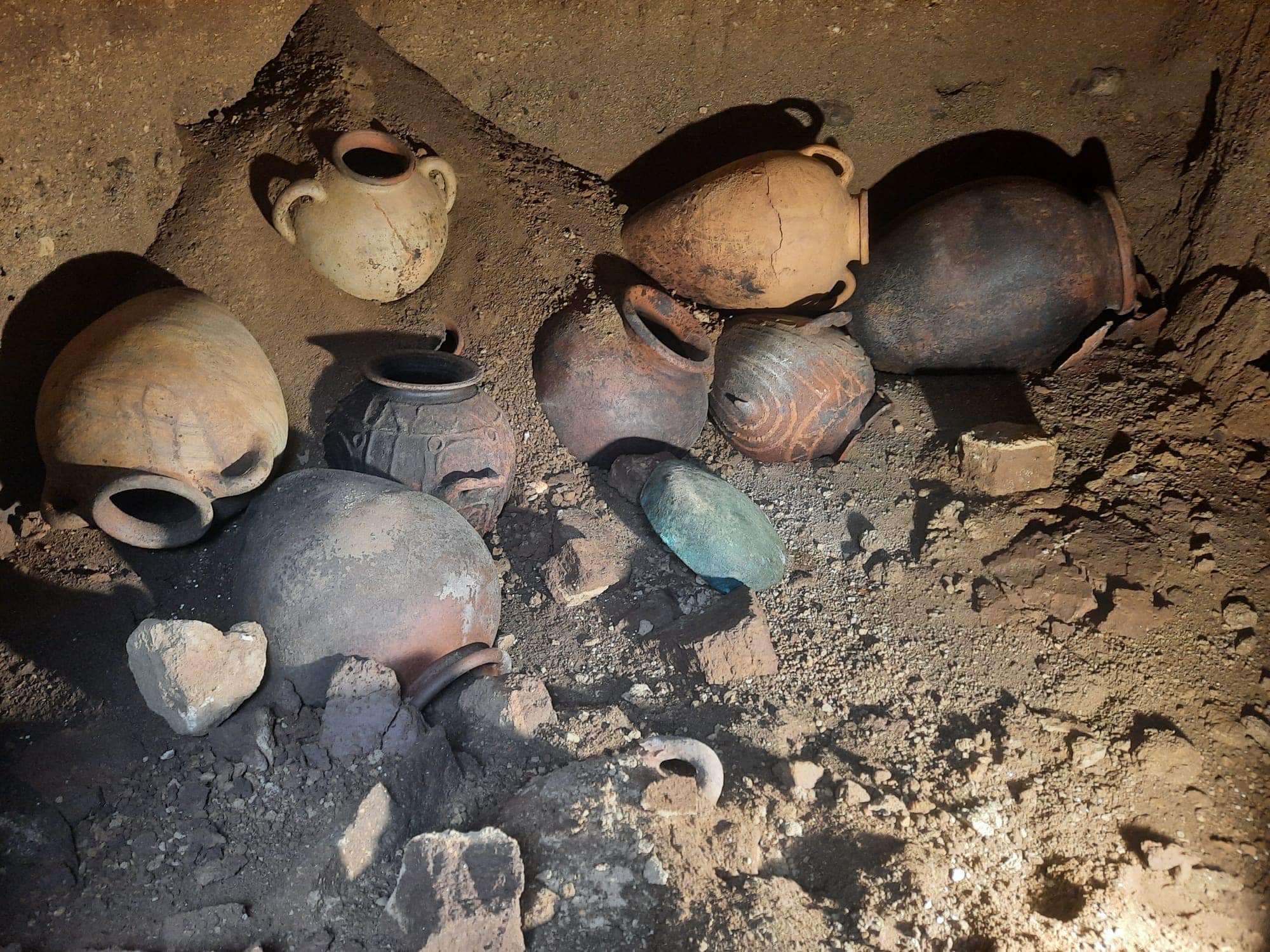
Archaeologists recently unlocked a 2,600-year-old Etruscan tomb that had stayed sealed for centuries. This ancient tomb was found in Vulci, a once prosperous Etruscan city in central Italy.
The tomb has two rooms and is still in excellent condition. Inside the tomb, the archaeologists found rare and valuable items and remains.
The Vulci Foundation, in collaboration with the Soprintendenza Archeologia, Belle Arti e Paesaggio for the province of Viterbo and southern Etruria, is leading the excavation efforts.
Etruscan tomb contained ancient Greek wine amphorae
Opening the large double-chamber tomb was no easy feat. The entrance was blocked by numerous tufa stone slabs, and they had to be carefully removed one by one.
The two chambers, dating back to the 7th century BC, were carefully carved into the soft volcanic tufa, as reported by Siviaggia. The first chamber contained four Etruscan transport amphorae meant for storing wine made locally.
Another intact Etruscan tomb has now been found and opened in the Osteria Necropolis, in Montalto di Castro. It is full of precious ceramicshttps://t.co/3U66z4HrdX pic.twitter.com/s76SGt3gCt
— Sarah (@Sarah404BC) November 2, 2023
On the other hand, the second chamber revealed a variety of amphorae and ceramics that came from the eastern Greek areas, which included Ionia and Corinth. Additionally, there were locally made items, including the unique black bucchero pottery.
Inside Chamber B, experts believe the two amphorae came from the Greek island of Chios, a place famous for producing the most highly valued wine in the Greco-Roman world. This chamber also held a tripod bowl and various iron objects, as shown in images shared by the Municipality of Montalto di Castro on Facebook.
Etruscan ritual of the ‘last meal’
Etruria, the central region of the Etruscan civilization, had fertile land perfect for growing vineyards. The Etruscans were skilled at cultivating and making high-quality wines.
The tomb, often called the ‘Tomb of the Silver Hands,’ has revealed a tablecloth used in the Etruscan tradition of the “last meal.” The way the different objects are arranged strongly indicates that this burial place was meant for an affluent Etruscan family.
Simona Carosi, the archaeologist in charge of the Archaeological and Nature Park, highlights how this discovery uniquely brings back to life the ancient funerary feast as it was organized by the Etruscans many centuries ago.
The Osteria burial ground has a track record of uncovering remarkable archaeological wonders. These include the mysterious ‘Tomb of the Sun and the Moon,’ the ‘Panathenaic’ tomb, the ‘Carved Ceilings,’ and a grand burial site known as the ‘Tomb of the Sphinx.’ All of these date back to the 6th century BC.
See all the latest news from Greece and the world at Greekreporter.com. Contact our newsroom to report an update or send your story, photos and videos. Follow GR on Google News and subscribe here to our daily email!



